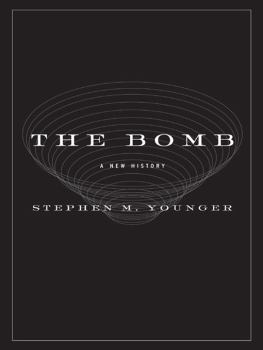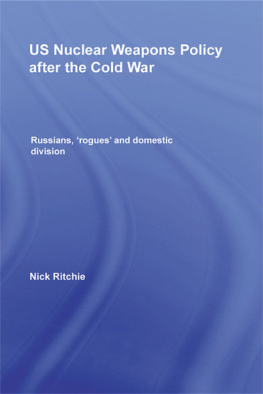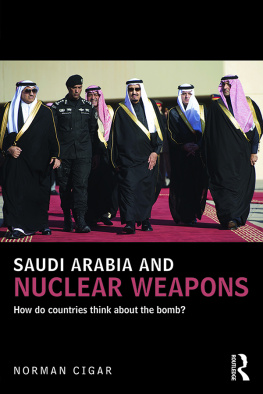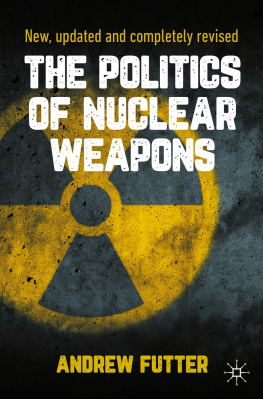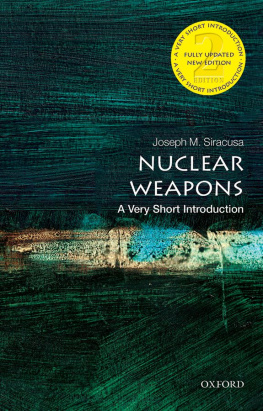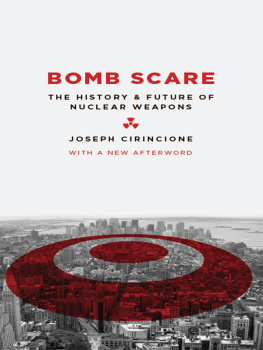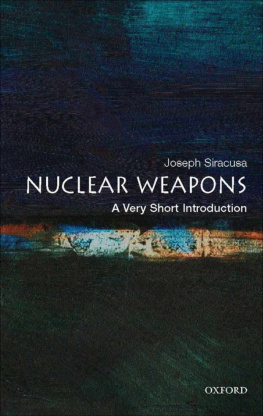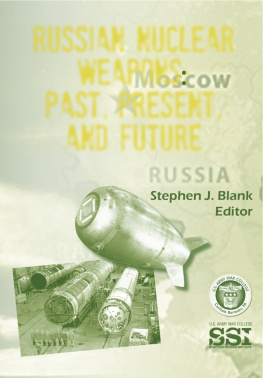It is a pleasure to acknowledge many helpful conversations with James Mercer-Smith and David Sharp, both of Los Alamos National Laboratory. Hanaa Benhalim of the Defense Threat Reduction Agency provided invaluable assistance in locating photographs of U.S. weapons systems. Kathy Vinson, of the Defense Visual Information Center, was very helpful in locating images of missiles, aircraft, and submarines. Mim John offered thoughtful comments on alternative views along with many specific suggestions for improvement. I would like to recognize admirals Richard Mies and James Ellis, both former commanders of United States Strategic Command, for their leadership and vision in transforming strategic thinking. My editors at Ecco, Emily Takoudes and Greg Mortimer, and my agents, Don Lamm and Christy Fletcher, provided sage advice throughout this project. Special thanks go to my wife, Mari, for her support and critical reading of the manuscript.
Why Nuclear Weapons in the Twenty-first Century?
T hey had been worried by thunderstorms. In the pre-dawn darkness, men gathered in a makeshift desert camp, the lucky ones busying themselves with dials and gauges, cables and checklists. The rest paced back and forth, smoked, and anxiously watched the clock. There was nervous conversation: What if it didnt work? What if it did? So much had been invested in this one event, precious resources in a time of war, all based on a promise, a theoryand, some might say, scientific arrogance.
At the appointed time a brilliant flash lit up the sky, a flash brighter than a thousand suns, a flash that penetrated the thick welders goggles worn by the observers, making them wince. It was a silent flash, the light moving so much faster than the shock wave that followed it. Seconds later came the bang, and then the steady roar of the atmosphere being displaced by a heat never before known on earth. A titanic mushroom cloud rose from the desert floor, a boiling mass of dust and gas. Purple lightning flashed across it. Those who saw it stood in stunned silence, aware that this was something new, a turning point, a single explosion in history that would reverberate through years, decades, perhaps even centuries. The men standing in the New Mexico desert on July 16, 1945, were its creators, those who had pulled the stopper on the bottle that contained the nuclear genie. Their wish was for their creation to end a war, but as with all genies, there were unintended consequences.
At the start of the twenty-first century, the United States stands at a position of unprecedented military superiority. No other country, or even most combinations of countries, could hope to defeat America in a conventional battle on land, at sea, in the air, or in space. Our technological prowess has enabled us to field weapons that can literally run rings around our competitors, giving us a superior fighting capability with fewer tanks, planes, and ships than any of our potential adversaries. More than just technology, we have military personnel who would have been the envy of any general or admiral of the pastwell educated, highly motivated, and dedicated to their jobs. Finally, the United States has demonstrated the will to use military force in the pursuit of its national objectives. America is no shrinking violet that might tempt an aggressive challengereveryone understands that America is the force to be reckoned with in the world.
The only real threat to U.S. military forces comes from nuclear, chemical, or biological weapons. Of the three, only nuclear weapons could inflict tactical defeat upon our forces. American troops are trained to fight and to win in environments contaminated with chemical or biological agents, but when a nuclear explosion occurs, there is nothing that can be done except to endure the blast, heat, and radiation, and hope that you are far enough away to survive. Protective suits and special vehicles enable soldiers to continue to function and advance even in thick clouds of phosgene, chlorine, and anthrax, but neither armor nor protective gear can protect against temperatures hot enough to melt steel and pressures great enough to crush a tank like a tin can. The United States has become the ultimate combat force on the planetonly the ultimate weapon can threaten that force.
But if nuclear weapons are the only real threat to our high-tech soldiers, sailors, and airmen, why dont we have a concerted policy to eliminate them from the planet? Wouldnt it make sense to just get rid of these uniquely threatening weapons so that the United States would reign supreme on any future battlefield? Why would we even consider the construction of new weapons, an action that might start another nuclear arms race that would only serve to put America at greater risk?
Conversely, when has history given any nation a permanent lock on power, one that will never be challenged by an adversary who would secretly violate international agreements to gain a strategic advantage? In the arms race preceding the Second World War, both Germany and Japan ignored treaties intended to cap the destructive capabilities of weapons. Each developed super-battleships, advanced aircraft, and more powerful artillery while their future adversaries stuck to their promises. Now, in another period of uncertainty and change, we are faced with the decision of what to do with the most powerful weapons ever created, the nuclear arsenals of the eight or ten nations in the world that have crossed a fundamental threshold in the ability to destroy.

